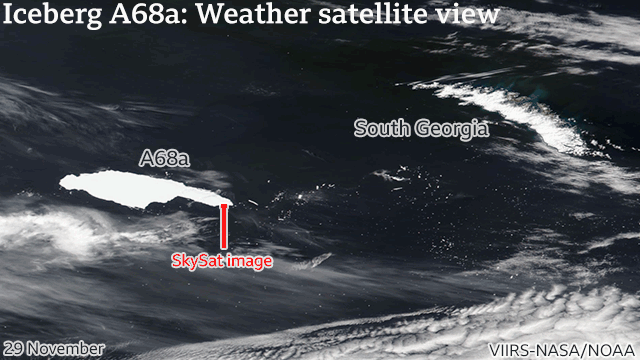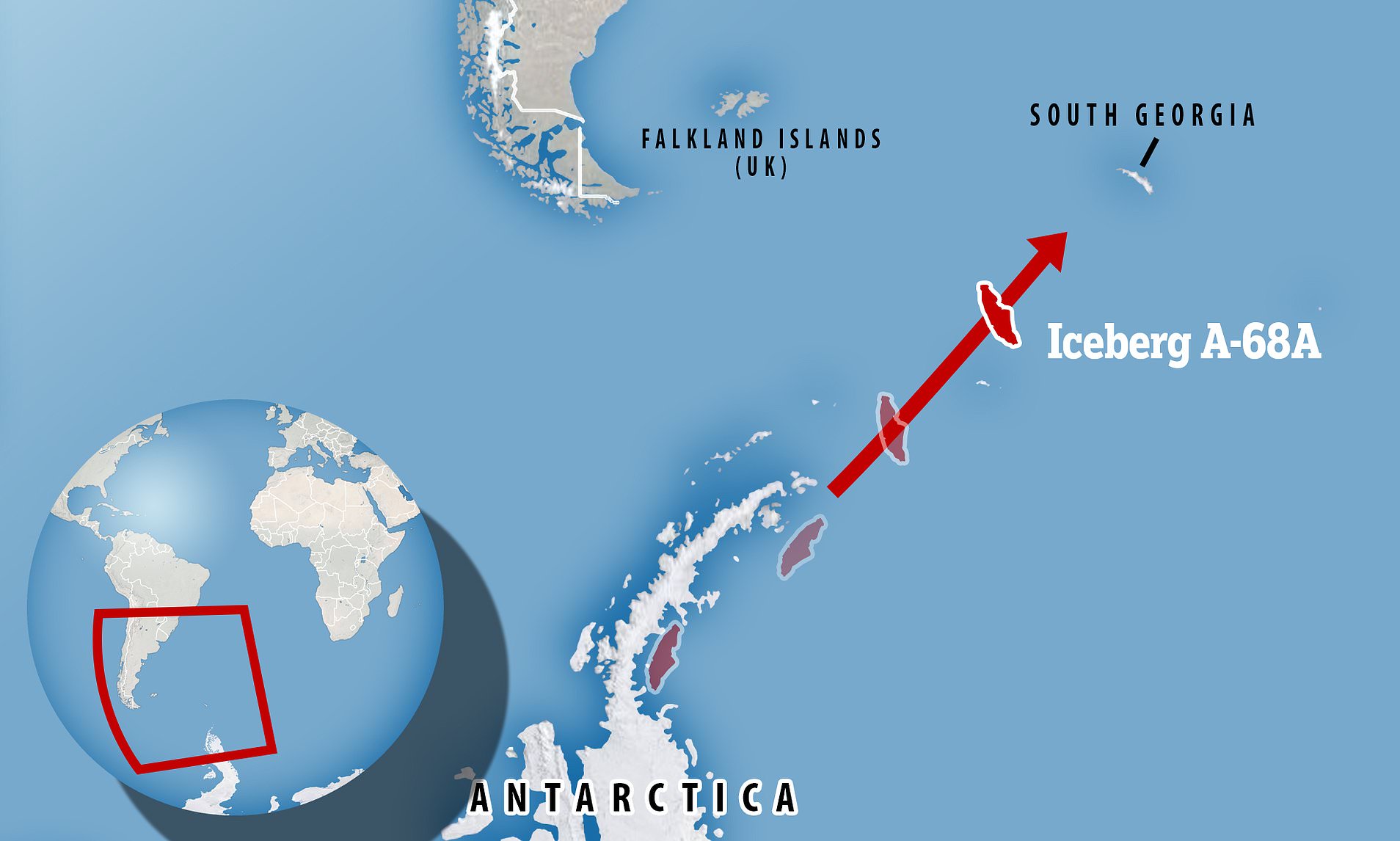
The after-effects will be having a huge impact on the ecosystem.
Study shows that the ‘Mega Iceberg’ that broke off from Antarctica back in 2017 released a massive amount of over 167 billion tonnes of fresh water into the ocean during three months.

In its complete lifespan, the Iceberg is being reported to have released one trillion tons of freshwater.
Iceberg A-68
The Iceberg A-68 was a massive iceberg that had a tabular surface area of 5, 800 square kilometers, larger than the state of Delaware. In the year 2017 during July, the iceberg broke off from an ice shelf in Antarctica called the Larsen C ice shelf.
The iceberg later broke into many parts throughout its journey and the mother iceberg was termed A-68A. The child icebergs were named according to their time of formation as:
- A-68B
- A-68C
- A-68D
- A-68E
- A-68F
At the time of its calving, Iceberg A-68 was the largest existing iceberg on Earth and the sixth-largest iceberg to be ever recorded.

The Journey of the Iceberg
The iceberg drifted across the ocean for three and a half years covering over 2, 500 miles across the Southern Ocean which is a quarter of the size of the country Wales. The iceberg was trending around the time of December in 2020 when concerns for the ecosystem started as it came eerily close to South Georgia.
However, the iceberg broke apart just before it could hit the seabed, which averted the risk of a collision that could have damaged the ecosystem on a massive scale. The Mega Iceberg’s path chart, thickness change, and its lifecycle were observed by researchers from the Centre for Polar Observation and Modelling (CPOM) and British Antarctic Survey (BAS).

The End of the Iceberg
Three satellites were used to examine the size of the iceberg by a team comprising of international scientists that found that the iceberg released over 167 billion tonnes of water around the three months it was around South Georgia Island. This amount is enough to fill Olympic-sized swimming pools 61 million times over!
The melting of the iceberg occurred because of the iceberg’s movement from cold water to warmer water near the island and when the iceberg came near the island, its thickness decreased from 771 feet to 219 feet between the period November 2020 to December 2021.
Anne Braakmann-Folgmann, a researcher at CPOM who is also the lead author of the study said in a statement: “This is a huge amount of meltwater, and the next thing we want to learn is whether it had a positive or negative impact on the ecosystem around South Georgia.”
The iceberg melted completely by the time of April 2021. During this time starting from 2017, the iceberg released a total of 992 billion tonnes of melted ice during its journey. This amount of melting will certainly impact the ecosystem of the island.